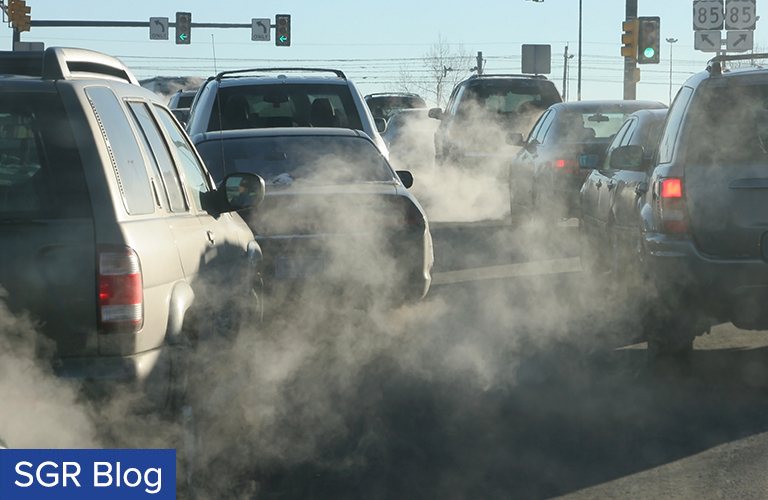
On August 2, 2018, the Trump administration proposed significant cuts to vehicle fuel efficiency and emission standards, and challenged the right of states, particularly California, to set more stringent tailpipe pollution standards. The proposed rule is called the “Safer Affordable Fuel-Efficient (SAFE)” Vehicles Rule for Model Years 2021-2026.” (Click here to read the proposed rule (pre-publication.))
The SAFE Vehicles Rule would lock in Model Year (MY) 2020 Corporate Average Fuel Economy (CAFE) standards and carbon dioxide emission standards applicable to passenger cars and light trucks manufactured for sale in the U.S. in MYs 2021 through 2026. The pre-publication copy was released by the Department of Transportation and the Environmental Protection Agency. The agencies estimate that “[c]ompared to maintaining the post-2020 standards set forth in 2012, current estimates indicate that the proposed SAFE Vehicles Rule would save over 500 billion dollars in societal costs and reduce highway fatalities by 12,700 lives (over the lifetimes of vehicles through MY 2029).”
California Governor Jerry Brown issued a statement on Thursday sharply criticizing the proposal: “[f]or Trump to now destroy a law first enacted at the request of Ronald Reagan five decades ago is a betrayal and an assault on the health of Americans everywhere. Under his reckless scheme, motorists will pay more at the pump, get worse gas mileage and breathe dirtier air. California will fight this stupidity in every conceivable way possible.”
The SAFE Vehicles Rule would weaken one of President Barack Obama’s central efforts to combat climate change. On July 29, 2011, President Obama announced an agreement with thirteen large automakers to increase fuel economy to 54.5 miles per gallon for cars and light-duty trucks by MY 2025. He was joined by Ford, GM, Chrysler, BMW, Honda, Hyundai, Jaguar/Land Rover, Kia, Mazda, Mitsubishi, Nissan, Toyota, and Volvo—which together accounted for over 90% of all vehicles sold in the United States—as well as the United Auto Workers, and the State of California. The agreement resulted in CAFE regulations for MY 2017-2025 vehicles, which were finalized on August 8, 2012. President Obama’s administration estimated that the programs, combined with the model year 2011 light truck standard, would save Americans $1.7 trillion dollars in fuel costs, and cut more than 6 billion metric tons of greenhouse gases over the life of the program.
The Obama-era standards were subject to a “Mid-Term” Evaluation. In January 2017, EPA conducted the Mid-Term Evaluation and affirmed that the MY 2022-2025 CAFE standards remained appropriate. EPA-420-R-18-002. However, in April 2018, the Trump Administration determined that the MY 2022-2025 GHG standards were not appropriate. 83 Fed. Reg. 16077 (Apr. 2, 2018). EPA followed up that determination with Thursday’s proposed SAFE Vehicles Rule.
For more information, please contact Phillip Hoover.

